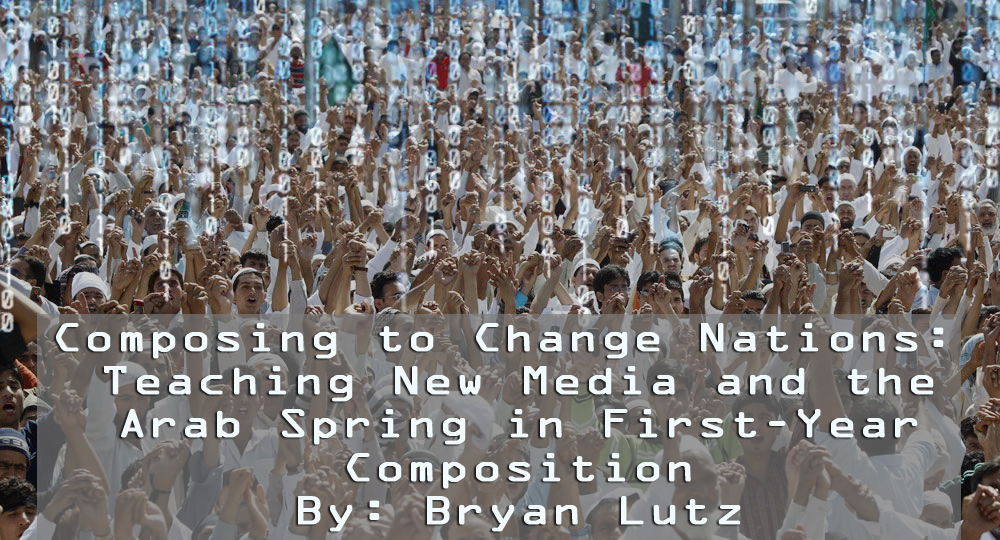Global Turns and Civic Engagement
Global Justice Rhetoric asks people to respectively listen, respond, and contribute solutions on issues of social justice (Del Gandio, 2008, pp. 188). As rhetoricians, Global Justice advocates reject the idea that one person’s narrative can tell the story of worldwide-decentered struggles. These ideas are achieved through active dialectic where people invited to represent themselves as part of a global community (Del Gandio, 2008, pp. 190). In the Freirian vein, advocates across the globe are posing problems by identifying the dispositions of the disenfranchised, the voiceless, and the othered, and demanding action from governments around world, often with their own ideas and solutions to offer. Global justice rhetoric prefers dialogue to a verbal duel (Del Gandio, 2008, pp. 193), and expects critical reflection upon one’s own experience of activism, rhetoric, and communication (Del Gandio, 2008, pp. 201). Many such organizations use the internet as means for such discussions. Around the world there are non-governmental, advocacy organizations working both on the ground and online towards social justice (Fenton, 2008, pp. 233), many of whom owe their existence to the internet (Smith, 2003, pp. 266). With its focus on dialogue and inclusion, Global Justice Rhetoric takes a particular form in civic engagement that is non-violent and non-hierarchical.
Civic engagement has long been a focus of Rhetoric and Composition. Eble and Gaillet (2004) argue, “The Triumvirate of rhetoric, ethics, and moral philosophy provides an effective foundation for reconfiguring existing pedagogy” (pp. 341), and that a civic-minded pedagogy gives students “the opportunity to apply their multiple literacies and learning within communities relecting their own interests” (pp. 341, 335). Ira Harkavy and Mathew Hartley (2010) provide the history of the University of Pennsylvania as reminder that the University has a responsibility to the public, noting that Benjamin Franklin envisioned universities as, “an institution dedicated to promoting civic involvement” (pp. 419). They also argue that this tradition is largely honored with service learning, which situates students within environments that challenges them to interact with the public. But this is not without its problems. Students in service learning programs are vulnerable to what J. Blake Scott (2004) calls “hyperpragmatism,” where students focus on professional success at the expense of overlooking “the broader power relations and textual circulation” which positions students to focus on learning corporate discourse conventions, thereby “reinforc[ing] dominant power relations and privileg[ing] corporate interests” (pp. 289, 293). Mary Hutchinson (2005) agrees and adds that students seem to have a “business minded” goal of acquiring skills rather than helping the organizations in which they are immersed (pp. 439). Though learning the conventions of discourse communities is important, it is also necessary for students to develop a critical consciousness about such conventions; this can be done through active civic engagement coupled with innovative approaches to technology. For Blake Scott, “Ethical stakes can be powerful motivators for students, and by is account, technology can facilitate this if is malleable enough to be customized to the preferences of the student (2004, pp. 294, 292). Technology can guide students through specific tasks, as well as negotiate relationships and set goals, and this can be done both at local and global levels (Turnley, 2007, pp. 104, 116).
I am compelled to think that universities should honor their history as institutions of civic engagement, a tradition that service learning seems to value for its pedagogical implications. There is evidence that suggest students learn best when they are put in situations where they are challenged to solve problems in real world contexts. To do so compostion instuctors can challenge themselves to “go against the grain” and innovate with the potentials of technology (Sorapure, 2003, pp. 6). Technology seems to have the potential for both engaging and critiquing the contexts in which literacies are developed. Though I am not a service learning practitioner, I see real potential in using technology to afford students the opportunity to reach out beyond the walls of the academy while still operating within it. Rhetoric and composition pedagogy explores how to teach students to both inform and persuade audiences of their choosing; this assignment offers students a way to test that knowledge in a way that parallels the Arab Spring.
